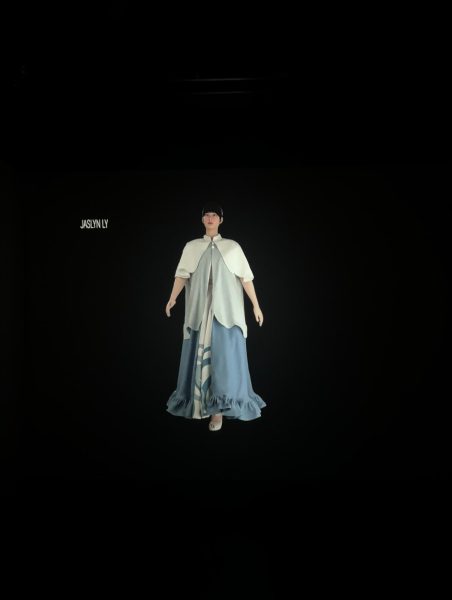Portfolio requirements change to prevent dropouts
September 26, 2005
Sarah Nusinow thought she wanted to be a fashion designer, but after a year of difficult classes, she decided it just wasn’t for her.
“I went into it not really knowing if it was what I wanted to do,” said Nusinow, who is now a sophomore magazine journalism major. “I didn’t have any experience with fashion design before I came to Kent.”
A new portfolio requirement may prevent future incoming freshmen from having this problem, said Elizabeth Rhodes, director of the School of Fashion Design and Merchandising.
“We had a very high dropout rate after the first three semesters in the program,” Rhodes said. “The students didn’t really know what fashion design was.”
Rhodes said only about 50 percent of any freshman class would actually graduate from the program.
Rhodes said she hopes completing a portfolio will improve graduation rates and allow students to understand what skills they need to be a designer.
“Some students want to become designers because of a love of clothes or shopping, or even dressing Barbie dolls,” Rhodes said.
When the reality of designing sets in, some students don’t have the necessary skills, she said. Others decide it’s just not for them.
Nusinow said she was one of those students. She said although she was good at sewing, her drawing skills were not where they needed to be.
“Once I got into it, the drawing just turned out to be overwhelming,” Nusinow said.
Future incoming freshmen will be required to complete a portfolio assignment in addition to other requirements. When a student initially applies for the program, he or she will be considered based on test scores and grade point average, Rhodes said. If a student has an ACT score of 21 or SAT of 980 or higher and a grade point average of 2.75 or higher, he or she will be sent information about the portfolio assignment.
The portfolio consists of three different skill assessments, Rhodes said. Students will be evaluated on their drawing, sewing, and writing abilities.
Freshman fashion design major Karen Holansky completed the portfolio assignment this past year. Holansky said she had to draw three fashion poses, sew a small piece of fabric and write an essay.
“I had to do two portfolios for two different schools,” Holansky said. “Compared to the other one, Kent State’s was really easy.”
Holansky said she had a fashion design program in high school, so she already knew she wanted to be a designer. However, she said she thinks the portfolio could have benefited a student who had never done fashion design.
“I think the portfolio was a good idea, especially the drawing part,” Holansky said. “But they should’ve made the sewing more advanced because that’s a big part of design too.”
Rhodes said the portfolios are judged by a group of faculty members. The instructors each judge the portfolios independently, and then the scores are averaged. The top 60 students are offered spots in the program, Rhodes said.
Rhodes said only 60 students are offered spots because studio space is limited. The students need studio space to use specialized equipment, and most classes use the studios as well.
“We were cramping everyone’s potential for development by having so many classes,” Rhodes said. She said teachers had to divide their time between students who would be able to succeed and students who will drop out after the first few semesters.
Rhodes said the portfolios are a way to decide which 60 students have the most potential to complete the program.
“We’re not looking for outstanding accomplishments,” Rhodes said. “We’re looking for potential to develop.”
Rhodes said the portfolio process is still undergoing inspection.
“This is the first time we’ve done this, so we don’t know if it’s going to work or not,” Rhodes said.
Nusinow said she thinks the new process will be beneficial.
“When you are in those classes, you can tell who wants to be there and who isn’t really that interested,” Nusinow said. “The portfolios will cut down on the number of students who just don’t belong there.”
Contact fashion reporter Samantha Rainwater at [email protected].
























